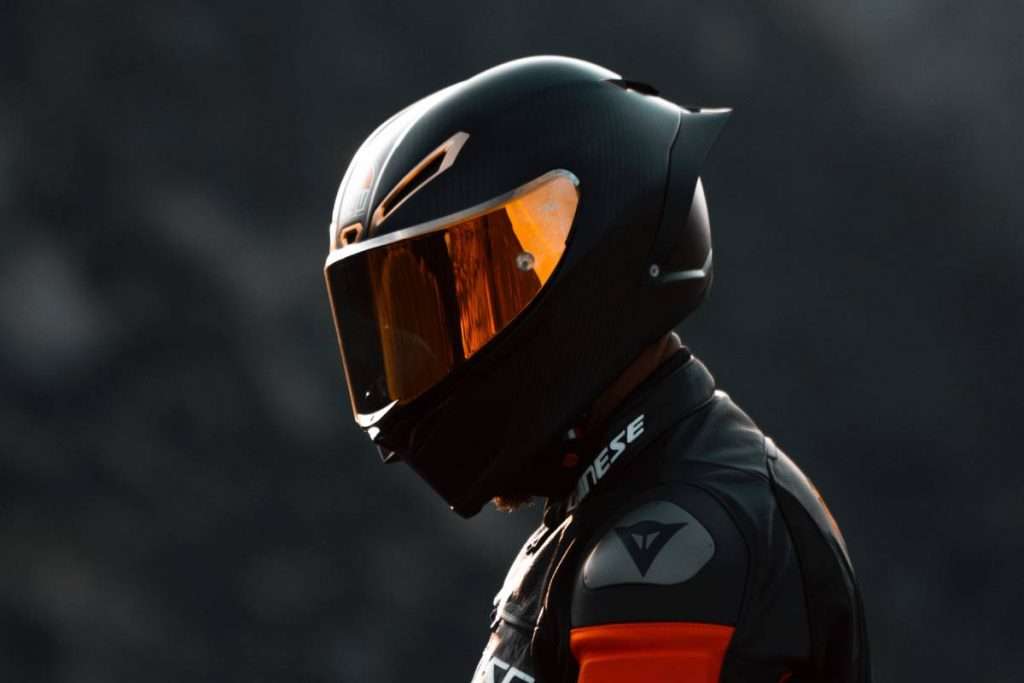Contents
Riding a motorcycle is a thrilling experience when the open road is calling. But it can also be deadly when a crash occurs. Wearing a helmet while riding decreases your chances of a serious brain or head injury. Riders often wonder just how much force a helmet can withstand in a crash.
A motorcycle helmet is designed to withstand a top acceleration force of 400 G’s. A crash can generate 1000 G’s on an unprotected head, but a helmet reduces that number to about 250 G’s, well within a helmet’s range.
Most of us aren’t well-versed when it comes to the laws of physics and the forces of impact that can occur on a motorcycle helmet. This article will help give you an idea of what your helmet is designed to do.
The Physics of Motorcycle Helmet Design

According to the NHTSA, in 2019 motorcyclists were 29 times more likely to die in a crash than those in a motor vehicle, and 4 times more likely to sustain injuries. That’s where helmets come in. While they may not always prevent serious injury or death, helmets are designed to protect the brain and head area from the intense forces that occur in a crash.
FMVSS-218 is the standard that all helmets sold in the United States must meet. Product improvement and rigorous testing through the years have helped helmet design address the physical forces that happen during a crash. To be DOT-compliant, helmets must pass the following three tests:
- Impact Attenuation Test: What a headform (representing a human head) does inside the helmet during impact
- Penetration Test: How deep a sharp object will plunge into the helmet
- Retention Test: The ability of the helmet straps to handle a load under tension
Together, all three tests help create the safest possible helmets. The Impact Attenuation test is the one that helps us understand how much force a helmet can withstand.
According to the standard, a helmet should be able to withstand top acceleration energy or gravitational forces of 400 G’s.
What Forces are Involved in a Crash?
Newton’s First Law of Motion tells us that an object in motion remains in that same motion at the same speed in the same direction unless acted upon by an outside force. So, applying that law to a motorcycle and rider tells us that both will continue moving forward together until either one collides with another object – either stationary or moving.
When the motorcycle is stopped suddenly by an outside force, the rider is not and momentum carries him off the bike in some way. Over the handlebars or off the side, the rider’s motion isn’t stopped until he himself hits another object, such as the ground, a wall, or the side of a car.
Newton’s Second Law of Motion helps us understand what happens when that external force is applied to the object. It is written as F=ma or Force= mass times acceleration. So the forces that are placed on the object are dependent on its speed and its mass or weight.
How Does a Helmet Help in a Crash?
No products found.
A helmet is designed with an inner and outer shell. The outer shell takes the brunt of the impact while the inner foam core allows your head to decelerate more slowly. Slowing down over time, even a few seconds, is better than a complete and instant stop.
Let’s put all this into real numbers. Helmets.org says that when your head hits a hard surface like concrete, your brain will experience a force of 1000 G’s or more in about 0.002 seconds because it comes to a sudden and extremely hard stop.
Wearing a helmet puts a cushion between you and the pavement. That cushion causes your stop to last about 4 times longer or 0.008 seconds. The longer stopping time reduces the deceleration forces by 25% to about 250 G’s. With a helmet able to withstand 400 G’s, this can mean the difference between life and death.
The Design of a Motorcycle Helmet

Motorcycle helmets are designed with four basic components.
- Outer shell: Plastic, fiberglass, or carbon create a hard shell to protect the head on impact.
- Inner foam core: Expanded polystyrene is used to cushion the head during a collision
- Straps: A strap system secures the helmet to the rider’s head.
- Face Shields: Clear or tinted, shields keep debris, bugs, and wind out of the rider’s face.
Final Thoughts
Motorcycle helmets are not fail-safe, but they do help to keep your actual head from directly absorbing all the G-forces that happen in a crash. Up to about 400 G’s, your helmet should be able to do its job.


 How to Pick the Best Motorcycle Helmet
How to Pick the Best Motorcycle Helmet  Are Bluetooth Helmets Worth It? The Honest Answer
Are Bluetooth Helmets Worth It? The Honest Answer  Improved Riding: The Quietest Motorcycle Helmet
Improved Riding: The Quietest Motorcycle Helmet  Can you Wear a Snowmobile Helmet on a Motorcycle?
Can you Wear a Snowmobile Helmet on a Motorcycle?